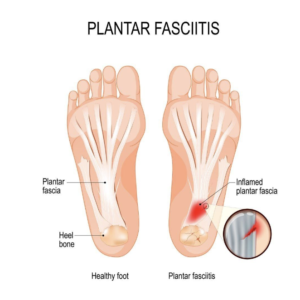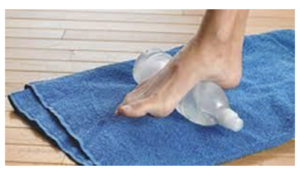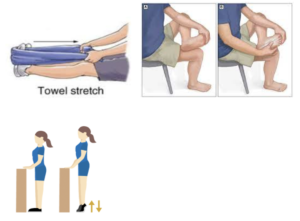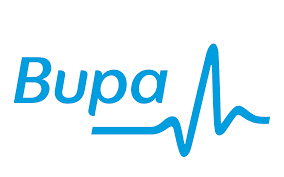
Plantar fasciitis is a condition of the foot that typically results from repetitive activities that put strain on the plantar fascia of the foot. In simpler terms, plantar fascia is the inflammation/swelling of the plantar fascia. Plantar fascia is the thick band of connective tissue that runs from the heel bone to the toes on the bottom of each foot. It is a very common musculoskeletal condition that affects all the age groups and accounts about 80% of the cases for heel pain. However, the exact cause is not clear.
Symptoms of plantar fasciitis: The diagnosis of plantar fasciitis depends on the patient’s medical history and physical examination. The most frequently reported symptom of plantar fasciitis is pain on first step. For example, getting out of the bed in the morning or standing up after prolonged sitting.
Physiotherapy enables the patients to successfully treat plantar fasciitis, lessen the discomfort and regain their ability to move around. Treatment is primarily dependent on what has been discovered during the examination and assessment. Some common treatments used to manage plantar fasciitis are: Stretching, Applying ice pack, Strengthening, Taping, MFR and Shock wave therapy.
Ice packs: The symptoms can be relieved with the help of an ice pack. Wrap the ice pack in a towel and apply it on the heel twice or thrice a day for 10 minutes. Alternatively, rolling a cold drink can underneath the foot can also help in reducing the pain and inflammation.

Stretching: Stretching the calf muscles and the plantar fascia could also help as tight calves are often a feature of planar fasciitis. Towel stretch, heel raises, self-stretching the plantar fascia can help in decreasing the stress on the foot.

Taping: Your physiotherapist will use taping method as it stabilises the fascia and the mobility of the fascia is restricted which then reduces the strain and prevents improper moving or significant fascial straining.
Myofascial Release: It is a soft tissue mobilisation performed on long term disorders that causes tightness un the tissues. MFR relieves the fascia’s excess pressure on the painful areas and returns the body to its natural alignment. Therefore, it is suggested that this approach acts as a facilitator in the treatment of plantar fasciitis.
Shock wave therapy: This method has been proven to reduce pain when combined with the other treatment methods such as stretching.
For more information regarding Shockwave therapy in Leeds, click here
For information regarding Shockwave Therapy in Manchester, click here
By Saloni Jawle, Physiotherapist





